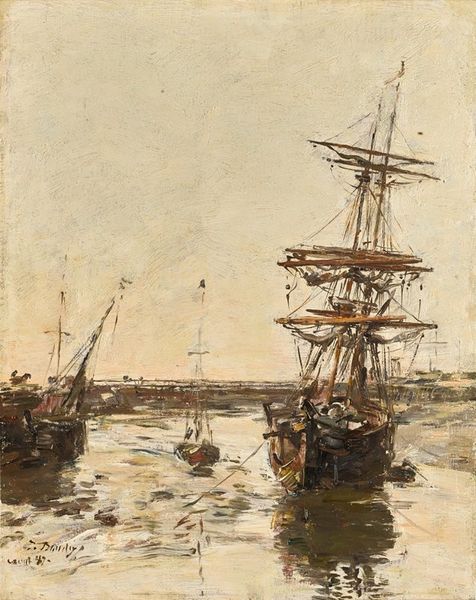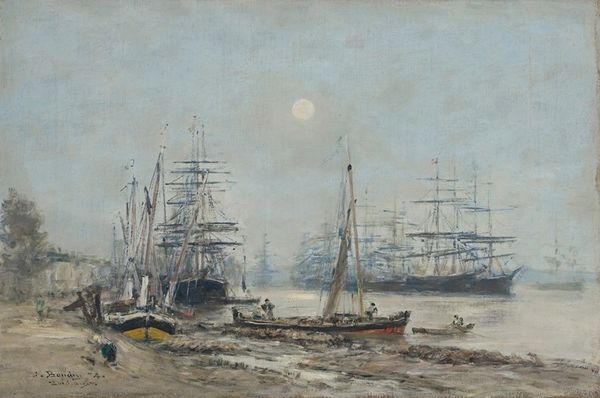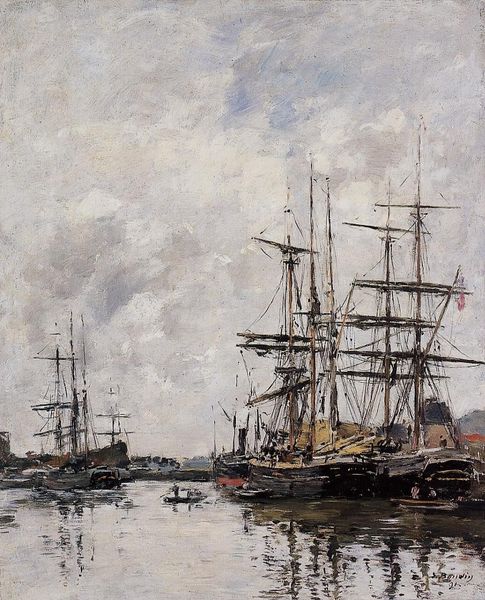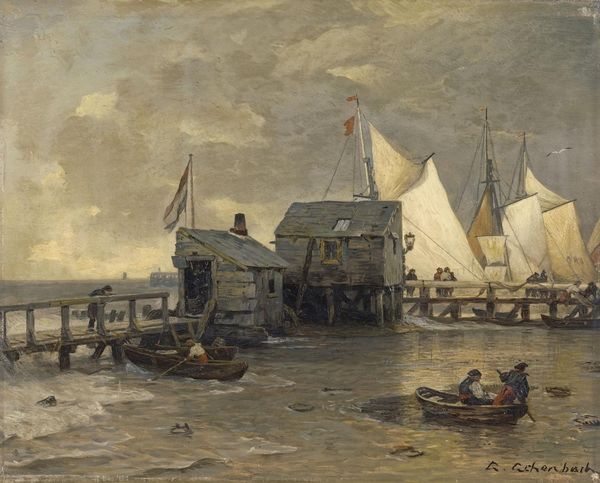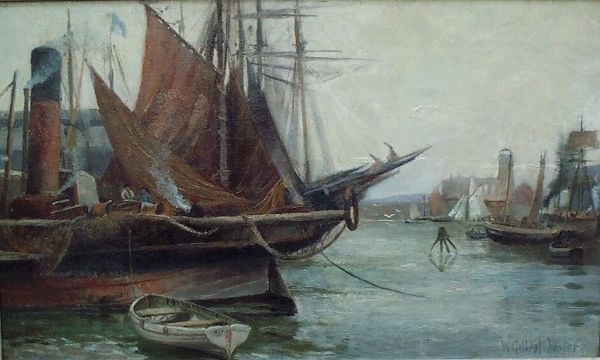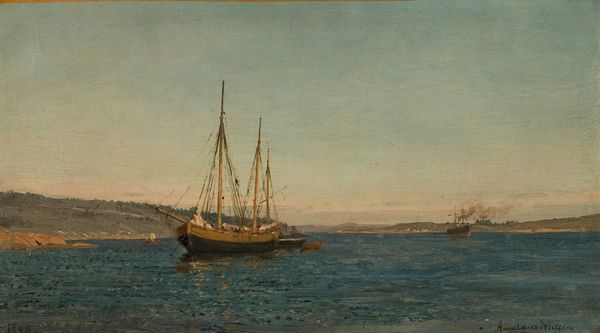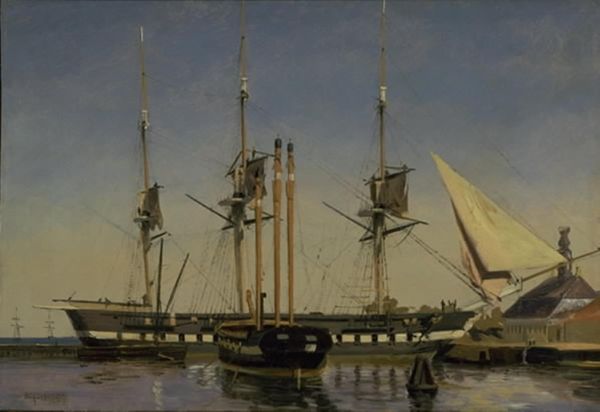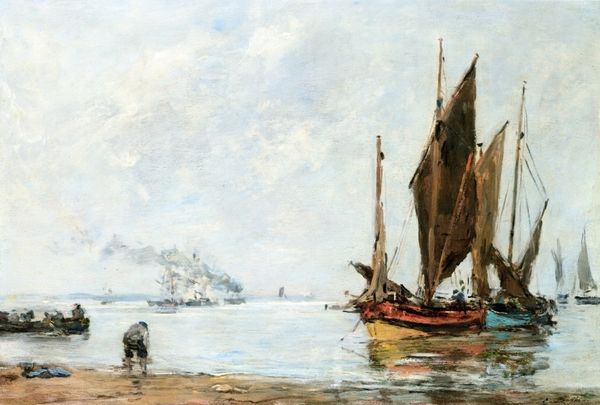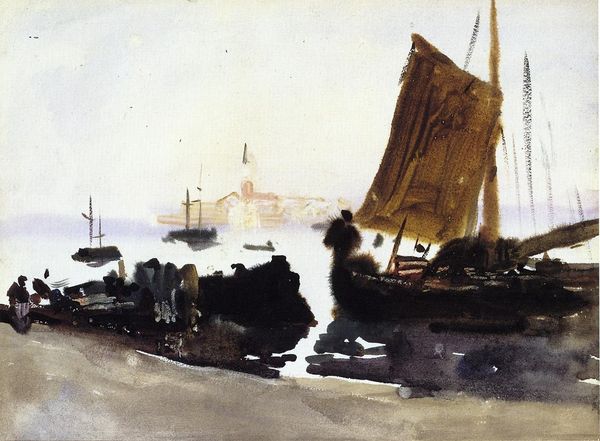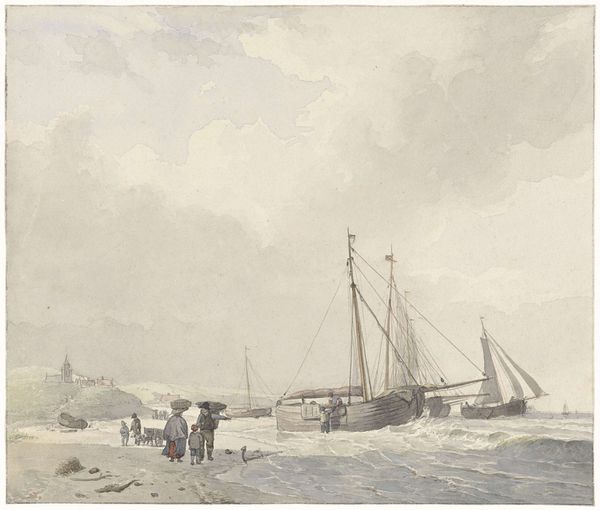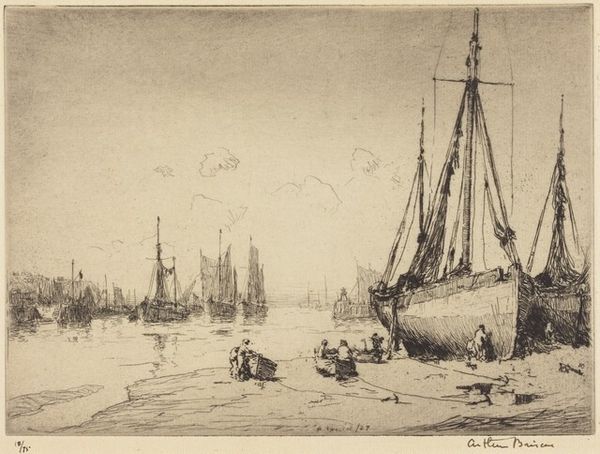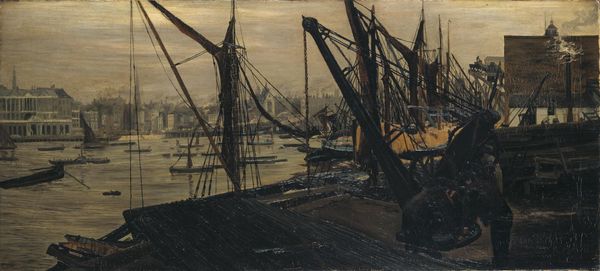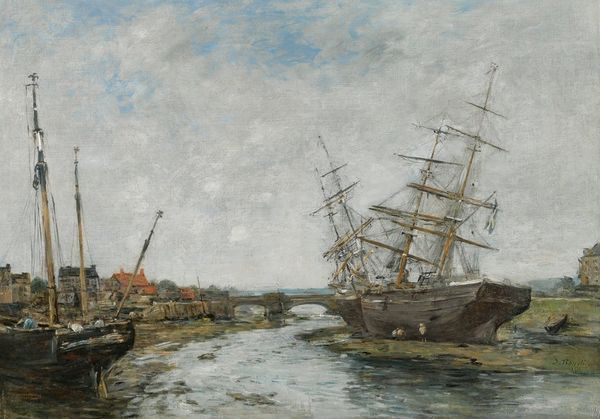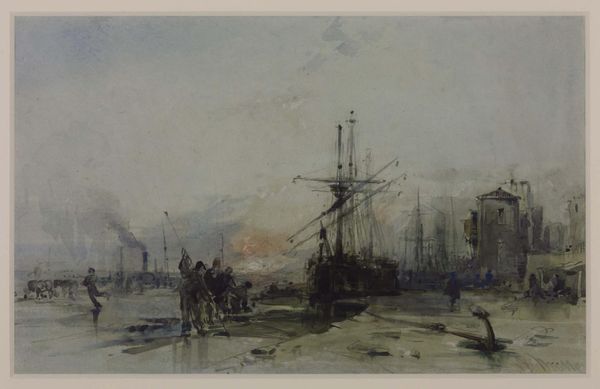
painting, plein-air, oil-paint
#
painting
#
impressionism
#
plein-air
#
oil-paint
#
landscape
#
oil painting
#
cityscape
#
modernism
#
realism
Copyright: Public Domain: Artvee
Curator: Immediately I’m struck by how bleak yet compelling this rendering of the Thames is. There's a real rawness to it. Editor: You’ve homed in on a crucial element of this canvas, painted in 1860 by James Abbott McNeill Whistler, entitled "The Thames in Ice." It is interesting how the artist combines the starkness of realism with the nascent touches of impressionism, anticipating a shift in the artistic landscape. Curator: For me, the composition conjures familiar tropes. Ships frozen in place call to mind the burdens of a struggling working class in a rapidly industrializing London. It feels significant that they are unable to sail. What stories do you see in these shapes? Editor: I see in those ships the dreams of Empire, perhaps stalled but certainly not yet abandoned. Observe how the masts reach upward like skeletal fingers towards a somber sky. The visual echo connects those structures with long-established symbolic links to aspiration, transcendence, and even suffering. The Thames itself acts as a mirror reflecting a period of profound transition in Britain. Curator: It is undeniable that the river plays an important role—and given its place within both historical and current debates about climate change, pollution, and resource exploitation, this image feels unsettlingly contemporary. We can draw a line, so to speak, from then to now. Editor: And the Thames is no mere waterway here; it’s almost a character itself! From the perspective of symbolic analysis, consider that water traditionally represents the unconscious, a place of both immense power and unpredictable currents. Whistler masterfully captures this ambiguity, rendering a river that is simultaneously life-giving and perilous. Curator: Thinking about it from an environmental justice perspective makes this work feel far from neutral. In foregrounding the material conditions and working class lives, there's an implied commentary on inequality and a questioning of who benefits from industrialization and global trade. Editor: An insightful observation. This frozen Thames, visually stunning as it may be, carries the weight of societal challenges and enduring historical symbolism. I now understand that there is a clear sense of continuity with our present time. Curator: Absolutely, and that is what makes engaging with historical artworks worthwhile—they remain relevant through continued analysis and questioning. Editor: Precisely; let us look for other ways to extend our discussion and uncover the relevance that it has with current events.
Comments
No comments
Be the first to comment and join the conversation on the ultimate creative platform.
